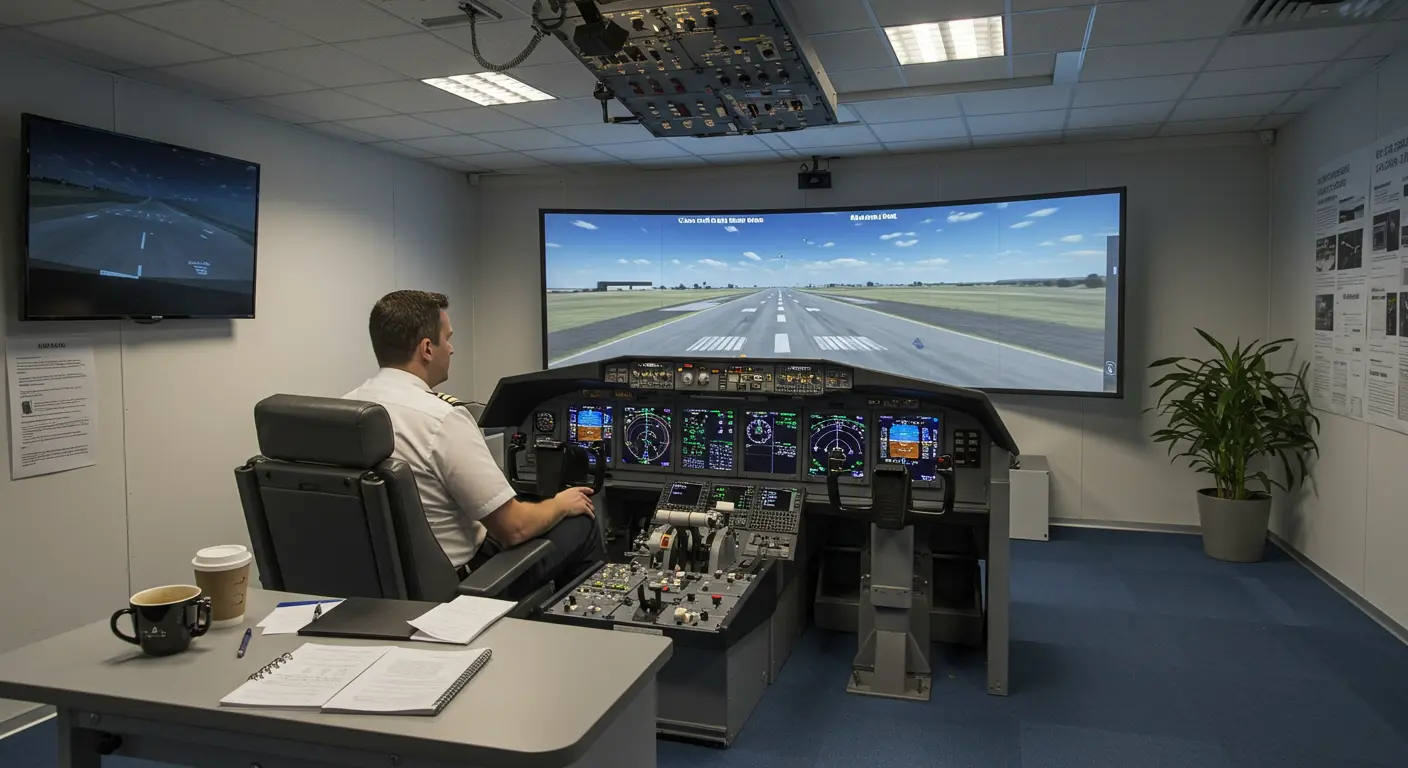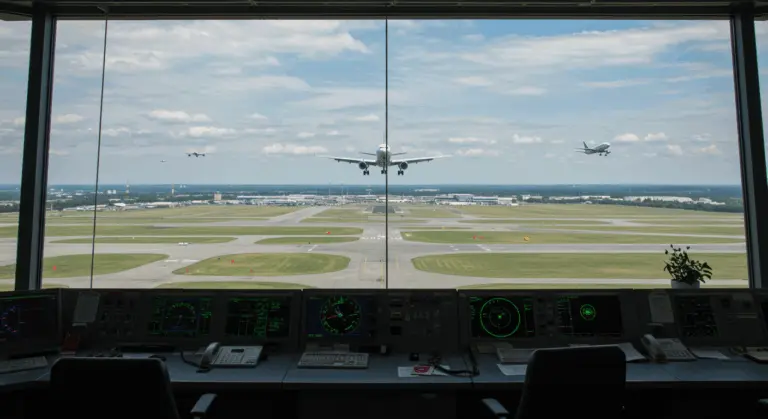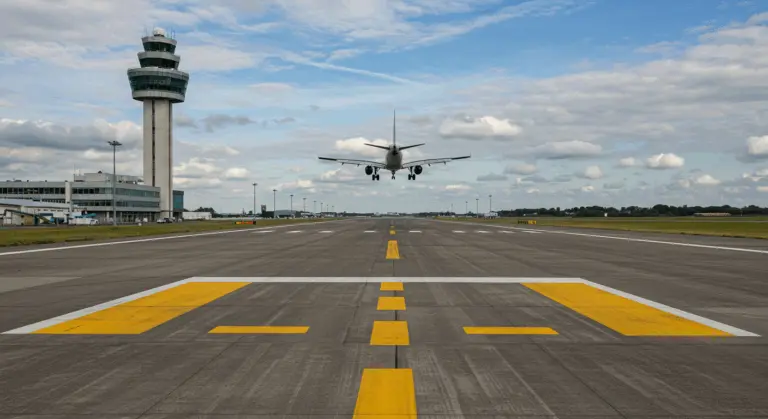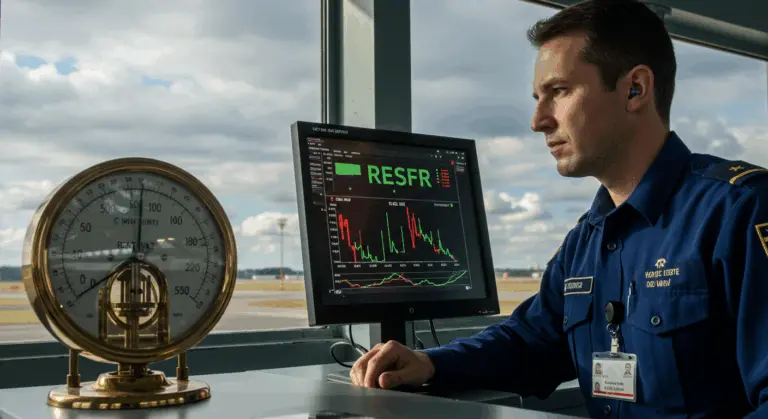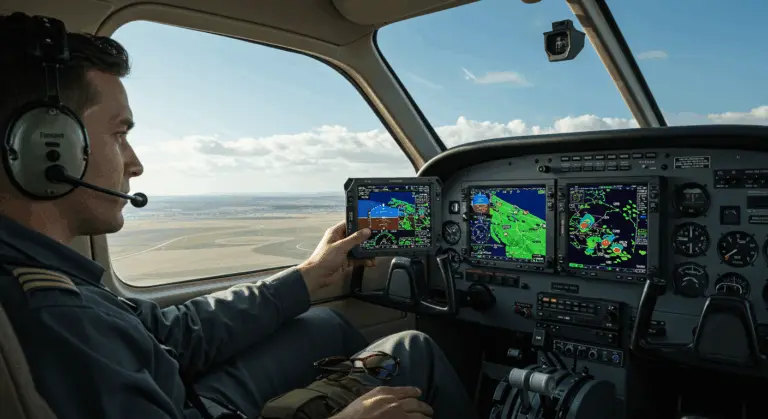Understanding Visual Illusions in Aviation – A Comprehensive Guide
What Are Visual Illusions in Aviation?
Visual illusions in aviation are deceptive perceptual phenomena that can occur even under optimal visibility conditions, causing pilots to misinterpret their aircraft’s orientation, altitude, or position relative to their surroundings. These illusions represent a significant safety concern, directly impacting a pilot’s ability to make accurate judgments during critical flight phases.
Unlike mechanical failures or weather-related challenges, visual illusions arise from the intricate ways our brains process visual information. When flying, pilots rely heavily on visual cues to maintain spatial orientation and situational awareness. However, certain combinations of light, color, and pattern can deceive the visual system, creating misleading interpretations of the aircraft’s relationship to its environment.
These perceptual distortions manifest in various forms, including:
-
Linear Perspective Illusions: Misjudging distance and depth.
-
Black-Hole Approaches: Impaired altitude perception during night landings.
-
Autokinesis: A stationary light appears to move against a dark background.
-
False Visual References: Mistaking sloping clouds or lights for the true horizon.
-
Glassy Water Landings: Difficulty judging height over a calm water surface.
Visual illusions are particularly dangerous because of their unpredictable nature—they can occur even when pilots believe they have clear visibility. A pilot approaching a runway with unusual features, such as varying width, slope, or surrounding terrain, may experience distorted depth perception that affects their judgment of altitude and approach angle, potentially leading to unsafe landing conditions.
Understanding these perceptual phenomena is crucial for aviation safety—recognizing the potential for visual illusions is the first step in developing effective mitigation strategies. By acknowledging that our visual system can be deceived, pilots can better prepare for situations where reliance on instruments becomes essential to maintain safe flight operations.
Types of Visual Illusions Pilots Encounter
Approach and runway illusions disrupt depth perception and altitude judgment. The runway width illusion demonstrates this: make a pilot feel uncomfortably high when approaching a narrow runway, or dangerously low when approaching a wide one.Black hole approaches create a particularly dangerous scenario, typically occurring during night landings over dark terrain where few visible lights exist between aircraft and runway. This absence of visual references creates a void-like appearance that can severely impair a pilot’s ability to judge distance and altitude, often resulting in a lower-than-intended approach path. Without proper instrument cross-checking, pilots may unknowingly descend into terrain before reaching the runway threshold.False horizon illusions emerge when pilots mistake sloping cloud formations, shorelines, or rows of lights for the actual horizon. This misperception can trigger inappropriate banking or attitude adjustments as pilots attempt to align with what they perceive as level flight. In mountainous regions,terrain illusions dramatically distort size and distance perception, making features appear farther away than they actually are due to the brain’s struggle with unfamiliar scale relationships.Autokinesis creates an especially deceptive phenomenon—stationary lights seemingly dance and move when stared at for prolonged periods against a dark background. This can cause pilots to make unnecessary control inputs while attempting to maintain what they perceive as a constant position relative to these seemingly moving lights. During water operations,glassy water illusions eliminate the texture and reference points pilots rely on to judge height. Depth perception becomes extremely difficult during seaplane landings.
Inversion Illusion – Understanding the Risks
The inversion illusion is an extremely disorienting vestibular disturbance that can occur during flight. This phenomenon manifests as a powerful sensation of tumbling backward. It occurs specifically when a pilot transitions too rapidly from a climbing attitude to level flight. The physiological basis lies in the fluid dynamics of the inner ear’s vestibular system, which is essential in maintaining spatial orientation.
When an aircraft climbs steadily, the fluid in the semicircular canals of the inner ear adjusts to this orientation. However, when the pilot abruptly levels the aircraft after a sustained climb, sudden deceleration causes this fluid to continue moving momentarily due to inertia. The brain misinterprets these fluid movements as the body tumbling backward, creating a compelling false sensation of inversion even though the aircraft remains in straight and level flight.
The danger of the inversion illusion lies in the pilot’s natural instinctive response to this perceived backward tumble. Without proper instrument reference, pilots experiencing this illusion may push the control column forward. They’re attempting to correct what they perceive as a backward pitch—a reaction that would actually cause the aircraft to descend rapidly. This inappropriate control input can lead to dangerous flight attitudes, excessive airspeed, or even controlled flight into terrain if occurring at low altitude or in instrument meteorological conditions.
Unlike some visual illusions that can be countered by looking outside the aircraft, the inversion illusion stems from sensory conflicts within the vestibular system itself. This makes it especially deceptive. Pilots must recognize that this sensation, though physically compelling, represents a false perception that contradicts the aircraft’s actual orientation. Maintaining a disciplined cross-check of flight instruments, particularly the attitude indicator, provides the objective reference needed to overcome this powerful sensory illusion and maintain safe flight parameters.
Coriolis Illusion – The Dangers of Head Movement
The Coriolis illusion is another serious vestibular disturbance that pilots can face during flight operations. This phenomenon occurs specifically when a pilot who is already in a steady turn suddenly moves their head in a different direction. The physiological mechanism involves the semicircular canals in the inner ear, which are responsible for detecting angular acceleration and maintaining balance.
When an aircraft maintains a constant rate turn, the fluid in the pilot’s semicircular canals eventually stabilizes to this rotational state. However, if the pilot then tilts or moves their head in a different axis—looking down at charts, reaching for controls, or checking overhead panels—this movement creates sudden disruption in the fluid dynamics across multiple semicircular canals simultaneously. The brain receives conflicting signals about the body’s orientation and movement, interpreting these mixed messages as tumbling or rotating in multiple directions at once.
The resulting sensation can be extremely disorienting, often described as feeling like the aircraft is simultaneously rolling, pitching, and yawing unpredictably. This severe spatial disorientation can trigger intense vertigo, nausea, and complete loss of situational awareness within seconds. The Coriolis illusion is particularly dangerous because the pilot’s instinctive reactions to these false sensations typically involve inappropriate control inputs that can place the aircraft in dangerous attitudes or flight regimes.
To reduce the risks of the Coriolis illusion, pilots should minimize head movements during turns—especially in instrument meteorological conditions. When head movement is necessary during a turn, it should be executed slowly and deliberately. Most importantly, pilots must maintain a disciplined instrument scan and trust their flight instruments over their bodily sensations. Training programs often emphasize recognition of this illusion and proper recovery techniques, as understanding the physiological basis of the Coriolis effect can help pilots mentally prepare for and counteract its disorienting influence during critical phases of flight.
Effects of Visual Illusions on Pilot Performance
Visual illusions seriously affect pilot performance by directly affecting situational awareness and decision-making processes, particularly during critical flight phases. When pilots encounter these perceptual distortions, they often make compensatory control inputs that can cause unintended deviations from both vertical and horizontal flight paths. These corrections, while well-intentioned, actually respond to false visual cues rather than the aircraft’s true position or attitude.
The consequences can be serious: pilots may fly incorrect approach paths—too high, low, fast, or slow—and misjudge altitude or approach angles, resulting in hard landings, runway overshoots, or controlled flight into terrain (FIT).
The operational impact extends far beyond approach and landing phases. During cruise flight, especially at night or over featureless terrain like oceans or deserts, visual illusions can lead to gradual deviations from intended flight paths or altitude levels without the pilot’s awareness. In extreme cases, these illusions contribute to spatial disorientation incidents, which have historically been implicated in numerous fatal accidents across both general and commercial aviation.
Mitigation Strategies for Visual Illusions
Effective prevention requires a multi-faceted approach centered on discipline, training, and technology:
-
Trust Instruments: The most important defense is trusting flight instruments over conflicting sensory inputs, especially when perception may be compromised.
-
Comprehensive Training: Simulator exercises that expose pilots to various illusion scenarios help build recognition and response skills in a controlled environment.
-
Pre-Flight Preparation: Analyzing potential illusion-inducing factors like runway configurations, terrain, and lighting conditions allows pilots to anticipate challenges.
-
Instrument Cross-Checking: A structured scan between outside visual cues and cockpit instruments helps verify the aircraft’s true position and attitude.
-
Technological Aids: Enhanced and synthetic vision systems (EVS/SVS) and head-up displays (HUD’s) provide supplementary data to maintain spatial orientation.
-
Crew Resource Management (CRM): In multi-crew operations, clear communication and cross-verification help identify and filter out perceptual distortions.
-
Maintain Healthy Skepticism: Approaching visual information with caution, particularly in high-risk conditions, is a foundational element of safe flying.
Night Flying and Visual Illusions
Night flying presents a difficult environment where visual illusions are more common and dangerous. Reduced visibility and fewer visual cues dramatically increase the risk of perceptual errors that can quickly become hazardous.
The human visual system, which relies heavily on ambient light and multiple reference points to establish spatial orientation, becomes severely limited after sunset. In darkness, the eye’s photoreceptors shift from cone-dominated vision (color and detail perception) to rod-dominated vision (peripheral and movement detection). These causes decreased visual acuity, impaired depth perception, and increased susceptibility to optical illusions. This change fundamentally affects how pilots perceive their environment.
At night, autokinesis becomes increasingly likely as pilots may fixate on a single point of light—a star or distant ground light—against a dark background. Staring at the light can make it appear to move, tempting the pilot to make unnecessary control inputs.
The black hole effect creates a serious risk during night landings over unlit terrain. The lack of peripheral visual cues can make pilots feel they are higher than they actually are. This often results in a dangerously low approach path.
With the natural horizon invisible at night, the risk of false horizon illusions increases dramatically. Pilots might mistakenly align the aircraft with sloping cloud layers or scattered ground lights, leading to unintentional banks or pitches.
The vestibular system—our inner ear’s balance mechanism—compounds these challenges. It generates conflicting sensory inputs when reliable visual references are absent. Without clear visual cues to override these sensations, pilots may experience powerful illusions of movement or position that contradict their actual flight path. This sensory conflict often triggers spatial disorientation, a condition where pilots lose their sense of position, attitude, and motion relative to the Earth’s surface.
Conclusion – Enhancing Safety Through Awareness
Understanding visual illusions is essential for aviation safety, as these perceptual deceptions challenge pilots of all experience levels. This awareness helps aviators anticipate and mitigate the risks of spatial disorientation and landing errors.
Such awareness is especially important during night flying, in low visibility, or over unfamiliar terrain. The gap between perception and reality remains one of aviation’s most persistent safety challenges.
Instrument proficiency is fundamental to countering visual illusions. Trusting instruments over conflicting sensory inputs is a skill that demands deliberate, regular practice and scenario-based training.
Beyond individual preparation, the aviation industry continues advancing technological solutions that supplement human perception. Enhanced vision systems, synthetic displays, and improved cockpit instrumentation all serve to provide pilots with more reliable information about their aircraft’s true position and attitude. However, these tools remain most effective when operated by pilots who understand the fundamental nature of visual illusions and recognize their own susceptibility to them.
Ultimately, aviation safety depends on continuous learning and deep respect for human perceptual limits. The most effective pilots combine confidence with appropriate respect for the deceptive power of visual illusions—the very foundation of safe flying.

